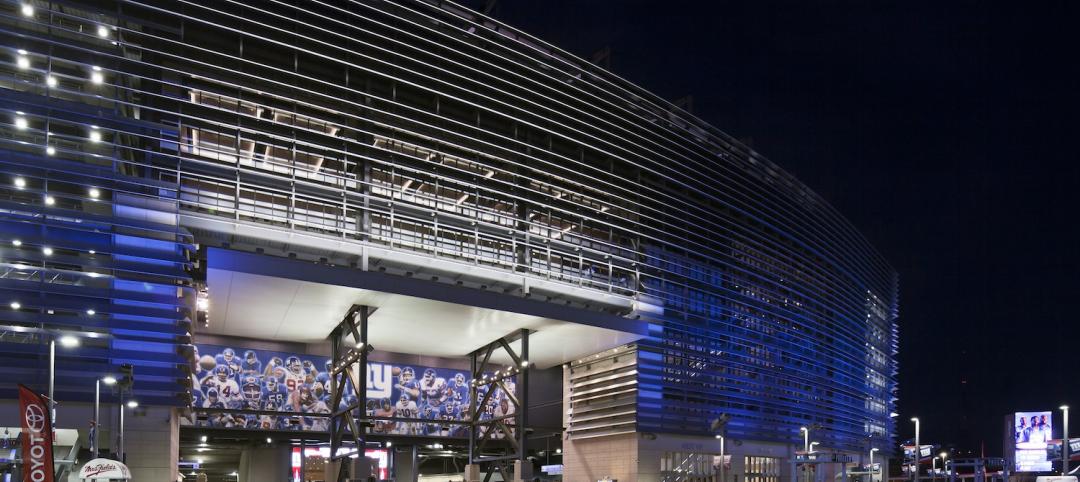Every day, in gyms across America, people of all ages and shapes exercise on treadmills, bicycles, steppers, and elliptical machines that provide their users with digital readouts of how fast they are going and how many calories they are burning.
And now, a new 1,300-sf gym that’s part of The Market at I-Square, a mixed-use development in Rochester, N.Y., is using the energy generated by members on its 17 spin bikes, two recumbent bikes, and two ellipticals as one of the sources powering The Imaginarium, a two-story, 9,000-sf Net Zero Energy arts-and-sciences center within the development that showcases earth-friendly practices, and includes the ECO Gym on its second floor, a rooftop kitchen and bar, a vertical garden, and a virtual-reality lounge.
ECO gym, which opened a few weeks ago, is expected to generate 3,660 kWhs of electricity annually, or about 5% of the Imaginarium’s annual demand. The Imaginarium gets another 35% of its power from small wind turbines with a power rating of 8.9 kWs. Other renewable energy sources for this center include 92 solar panels, and a geothermal heating and cooling system.
The exercise machines were provided by SportsArt America, whose U.S. headquarters is in Mukilteo, Wash. SportsArt started producing fitness equipment in 1977 and launched its ECO line in 2014.
Each piece of equipment has an interface where users can track their “human watts” (the amount of electricity a user is generating by using the equipment) and compare these to the amount of electricity the equipment returns to the grid. The company estimates that about 74% of the energy generated during a workout on its equipment is captured for use to power the building.

The gym's equipment lets users track their “human watts” against the amount of eletricity returned to the grid. The equipment captures about 74% of what's generated for the building's energy consumption. Image: SportsArt
Until recently, SportsArt—which does business in over 70 countries and has offices in the U.K., Switzerland, Taiwan, and Beijing—has placed its equipment mostly in gyms and hotels in Europe and Asia. It is now eyeing North America for growth.
The first U.S. gym to take on the company’s ECO-POWR cardio line of spinning bikes was Sacramento (Calif.) Eco Fitness, which opened in December 2016. At the time of that opening, SportsArt America estimated that a single hour-long workout would produce more than 160 watts per hour per unit of electricity.
Ivo Grossi, its CEO, says SportsArt America’s main target markets for expansion in the U.S. are independent health clubs and studios; colleges and universities; hotels, and multi-housing and residential projects. (On its website, SportsArt America has a room-planning page that allows homeowners to digitally place its equipment in different residential room configurations.)
“We look forward to bringing sustainability to the forefront of the fitness industry. We aspire to be the Tesla of fitness, which is a vision in line with the wants of the largest demographic group flocking to the fitness industry: The Millennials,” says Grossi.
I-Square and SportsArt America were involved in the interior design of ECO Gym in Rochester, whose Building Team included Meehan Architecture (architect), LeFrois Builders & Developers (GC), CM Armitage Electrical Contracting (EE), Kenron Industrial Air Conditioning (HVAC), and Green Leaf Professional Services (IT).
Related Stories
| Sep 22, 2014
4 keys to effective post-occupancy evaluations
Perkins+Will's Janice Barnes covers the four steps that designers should take to create POEs that provide design direction and measure design effectiveness.
| Sep 22, 2014
Sound selections: 12 great choices for ceilings and acoustical walls
From metal mesh panels to concealed-suspension ceilings, here's our roundup of the latest acoustical ceiling and wall products.
| Sep 17, 2014
Atlanta Braves break ground on mixed-use ballpark development
SunTrust Park will be constructed by American Builders 2017, a joint venture between Brasfield & Gorrie, Mortenson Construction, Barton Malow Company, and New South Construction.
| Sep 9, 2014
Using Facebook to transform workplace design
As part of our ongoing studies of how building design influences human behavior in today’s social media-driven world, HOK’s workplace strategists had an idea: Leverage the power of social media to collect data about how people feel about their workplaces and the type of spaces they need to succeed.
| Sep 3, 2014
New designation launched to streamline LEED review process
The LEED Proven Provider designation is designed to minimize the need for additional work during the project review process.
| Sep 2, 2014
Ranked: Top green building sector AEC firms [2014 Giants 300 Report]
AECOM, Gensler, and Turner top BD+C's rankings of the nation's largest green design and construction firms.
| Aug 29, 2014
The new College Football Hall of Fame opens in Atlanta
Adjacent to the Georgia World Congress Center and Centennial Olympic Park, the three-story, 94,250-sf attraction is designed to celebrate the traditions of college football.
| Aug 27, 2014
Ranked: Top sports facility sector AEC firms [2014 Giants 300 Report]
Populous, AECOM, and Turner head BD+C's rankings of the nation's largest sports facility design and construction firms, as reported in the 2014 Giants 300 Report.
| Aug 27, 2014
Survey of NCAA athletic directors reveals strong demand for new facilities, fan amenities
More than 80% of college athletic directors plan to make significant investments in facilities over the next five years to target potential recruits and spectators, according to a new survey by AECOM and Ohio University.
| Aug 20, 2014
WELL Building: The next step in green sports construction
The WELL Building Standard, a new protocol that focuses on human wellness within the built environment, is a particularly good fit for sports facilities, write Skanska's Tom Tingle and Beth Heider.

















